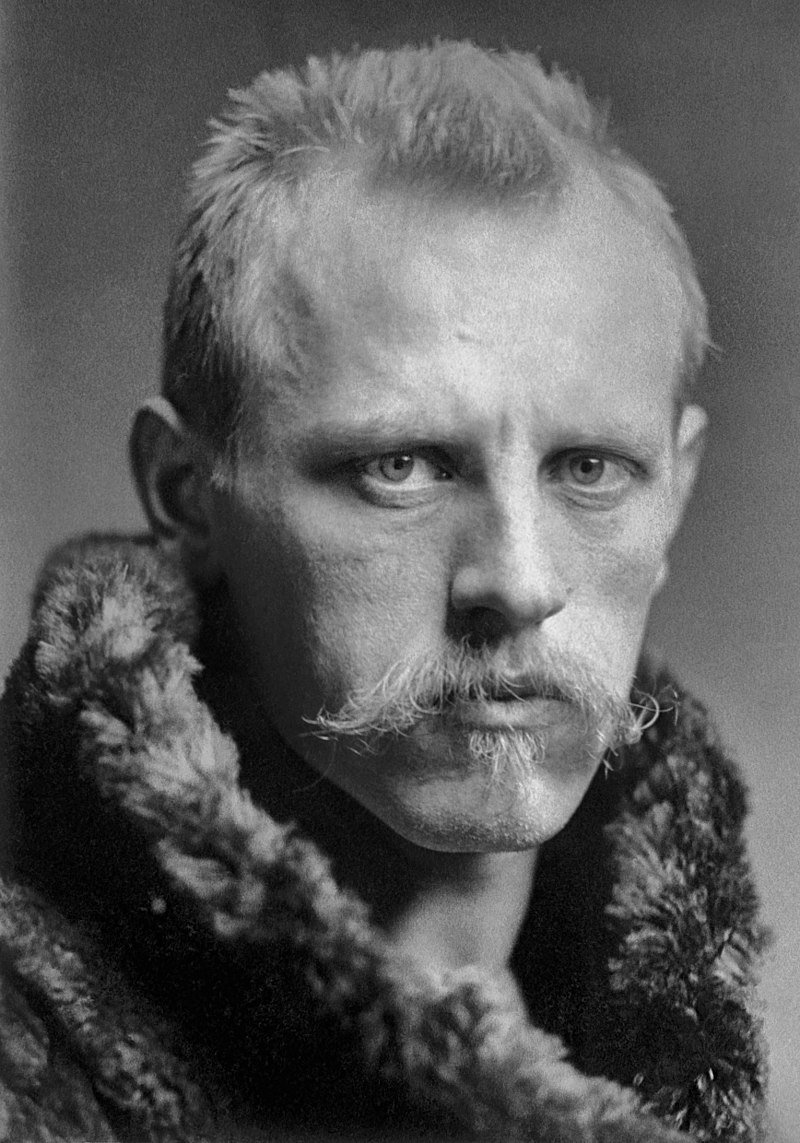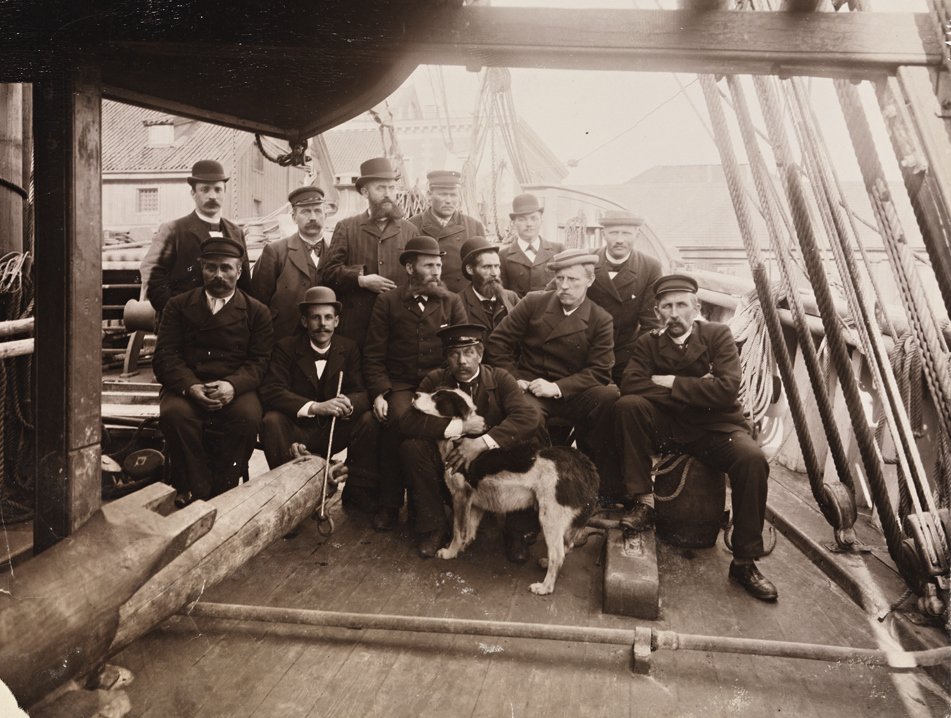The First Step to Overcoming Doubt (Like an Explorer)
Fridtjof Nansen, serious doubter.
Explorers appear to us as bold figures, doubtless in their endeavors. But do they second-guess themselves like we do?
Norwegian explorer Fridtjof Nansen sure did.
In 1888, Nansen explorer became the first to cross Greenland’s ice sheet—a 260-mile journey that took over 11 weeks to complete. His team’s motto? “Death, or the west coast of Greenland!”
Five years later, Nansen shocked the exploration world when he planned to purposely get his ship, Fram, stuck in the Arctic ice in order to take advantage of the current and become the first to reach the geographic north pole. Reckless insanity, everyone said. He did it anyway, and even though he didn’t make the pole, he set the farthest north record for the time.
The confidence of this guy, right?
But Nansen experienced the same inner turmoil as anyone else.
“We are oddly constructed machines,” he writes in Farthest North Volume 2. “At one moment all resolution, at the next all doubt.”
Sometimes I delude myself with charming dreams of my return home after toil and victory, and then all is clear and bright. Then these are succeeded by thoughts of the uncertainty and deceptiveness of the future and what may be lurking in it, and my dreams fade away like the northern lights, pale and colorless.
This from a guy who got his Phd in zoology the same year he crossed Greenland, who advised Roald Amundsen on his search for the northwest passage, who would later go on to win the Nobel Peace Prize after World War I for overseeing the repatriation of over 400,000 prisoners of war.
Doubt? Conflict? Nothing but, in fact.
Ugh! These everlasting cold fits of doubt! Before every decisive resolution the dice of death must be thrown.
Reading Nansen makes me reflect on how often I beat myself up over far more trivial ideas and goals (in a far less poetic way)? How many times have I let self-doubt invent the ways I might fail? To tether me to my comfort zone? One day I’m a genius, the next an idiot. Or as Nansen puts it:
Today our intellect, our science…is not worth a pipe of tobacco…[Yet] To-morrow we throw ourselves heart and soul into these very researches, consumed with a burning thirst, to absorb everything into ourselves, longing to spy out fresh paths, and fretting impatiently at our inability to solve the problem fully and completely. Then down we sink again in disgust at the worthlessness of it all. As a grain of dust on the balance is the whole world.
The unstuck Fram crew, returned from their Arctic journey, 1896.
Similar to an angel on one shoulder and a devil on the other, Nansen believed that a person had two souls in constant battle. One could propel him across frozen lands for months at a time. The otyer just wanted to kick back with some good tobacco. Seriously:
Let me fill a soothing pipe and be happy. No, the pipe is not a success. Twist tobacco is not delicate enough for airy dreams. Let me get a cigar. Oh, if one had a real Havana!
Of course he didn’t sit back with a cigar when his dreams beckoned him. He planned, he pursued, he rallied others around his ideas. But how? With this mindset:
It is nothing new to suffer from the fact that our knowledge can be but fragmentary, that we can never fathom what lies behind. But suppose, now, that we could reckon it out, that the inmost secret of it all lay as clear and plain to us as a rule-of-three sum, should we be any the happier? Possibly just the reverse. Is it not in the struggle to attain knowledge that happiness consists? I am very ignorant, consequently the conditions of happiness are mine.
Nansen knew that the struggle between self-doubt and dreams takes place at the very heart of the human condition. Happiness wouldn’t found in squashing self-doubt, but in making sure that his chosen activities were bold enough to manifest it in the first place. The struggle is the only way to attain knowledge. The only way to live!
H’m! as if dissatisfaction, longing, suffering, were not the very basis of life. Without privation there would be no struggle, and without struggle no life, that is as certain as that two and two make four. And now the struggle is to begin; it is looming yonder in the north. Oh, to drink delight of battle in long, deep draughts! Battle means life, and behind it victory beckons us on.
Author Steven Pressfield would agree. I recommend all of his books, but War of Art teaches to expect what he calls “resistance'“ with every expressive or important thing I want to do. Acknowledging that resistance is a good thing, or that you actually want your two souls to battle like Nansen did, that’s a tough one. But I think it’s the only way.
YOU HAVE TO LET THE BATTLE TAKE PLACE INSIDE. YOU HAVE TO EMBRACE SELF-DOUBT LIKE A WELCOMED GUEST ON YOUR JOURNEY. IT’S THERE TO TELL YOU THAT YOU ARE DOING THE RIGHT THING.
I think too much about goals I’ve failed to accomplish, those I’ve failed to pursue, and I wonder the same about explorers. How many were held up by conditions beyond their control? But how many more never became explorers because they failed to take the first step?
Pioneering pilot Amelia Earhart said, “The most difficult thing is the decision to act, the rest is merely tenacity. The fears are paper tigers. You can do anything you decide to do. You can act to change and control your life and the procedure. The process is its own reward.”
There’s a reason Nansen named his purpose-built ship, Fram. It spoke to his journey north, the nature of expeditions. But Nansen the philosopher explorer would never let something so important go without speaking to his inner nature as well: the self-doubt, the dream, and living through the battle between the two the only way one can. Keep going Fram, Norwegian for “forward.”



